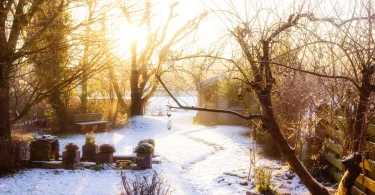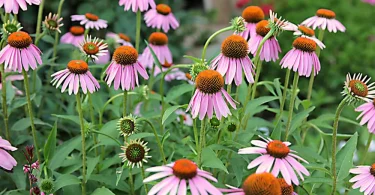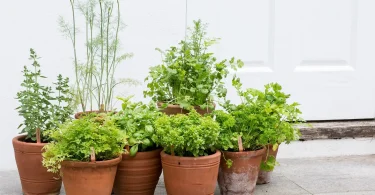Papayas are tropical delights, bursting with sweet, juicy flavor and packed with nutrients. Growing your own papaya tree from seeds is a rewarding and surprisingly simple process. Whether you’re a seasoned gardener or a beginner, this guide will walk you through the steps to successfully grow papaya from seeds at home.
Why Grow Papaya from Seeds?
Papayas are not only delicious but also rich in vitamins C and A, antioxidants, and digestive enzymes like papain. Growing your own papaya tree allows you to enjoy fresh, organic fruit right from your backyard. Plus, papaya trees are fast-growing and can bear fruit within 6–12 months under optimal conditions!
What You’ll Need
- Fresh papaya seeds (from a ripe papaya)
- Potting soil (well-draining, rich in organic matter)
- Small pots or seed trays
- Watering can or spray bottle
- Warm, sunny location (papayas thrive in tropical or subtropical climates)
- Optional: Plastic wrap or a greenhouse for humidity control
Step-by-Step Guide to Growing Papaya From Seeds
1. Harvest and Prepare the Seeds
Start with a ripe papaya from a grocery store or your local market. Cut the fruit in half and scoop out the black seeds. Rinse them thoroughly under running water to remove the gelatinous coating. Spread the seeds on a paper towel and let them dry for 24–48 hours in a shaded, well-ventilated area.
Tip: Fresh seeds have a higher germination rate, so avoid using old or processed seeds.
2. Soak the Seeds
To boost germination, soak the dried seeds in lukewarm water for 12–24 hours. This softens the seed coat and encourages sprouting. Discard any seeds that float, as they are likely not viable.
3. Prepare the Planting Medium
Papayas need well-draining soil to prevent root rot. Mix equal parts of potting soil, compost, and sand or perlite for an ideal growing medium. Fill small pots or seed trays with this mix, leaving about half an inch of space at the top.
4. Plant the Seeds
Plant 3–5 seeds per pot, about ½ inch deep, to increase the chances of successful germination. Cover lightly with soil and water gently using a spray bottle or watering can. Keep the soil moist but not waterlogged.
5. Provide Warmth and Humidity
Papaya seeds germinate best in warm temperatures (70–85°F or 21–29°C). Place the pots in a sunny spot, such as near a window or in a greenhouse. To maintain humidity, cover the pots with plastic wrap or a clear plastic lid until the seeds sprout, which usually takes 2–3 weeks.
Tip: If you live in a cooler climate, consider using a heat mat to maintain consistent warmth.
6. Care for Seedlings
Once the seeds sprout, remove the plastic cover and thin out the weaker seedlings, leaving the strongest one in each pot. Water regularly to keep the soil moist, and ensure the seedlings get at least 6 hours of sunlight daily. If the seedlings appear leggy, they may need more light.
7. Transplanting
When the seedlings are 6–12 inches tall (usually after 2–3 months), they’re ready to be transplanted. Choose a sunny, well-drained spot in your garden or a large container if you’re growing them indoors. Dig a hole twice as wide and deep as the root ball, and gently place the seedling in, covering the roots with soil. Water thoroughly.
Note: Papayas are sensitive to frost, so if you’re in a cooler region, consider growing them in pots that can be moved indoors during winter.
8. Ongoing Care
- Watering: Keep the soil consistently moist but not soggy. Overwatering can harm the roots.
- Fertilizing: Feed your papaya tree every 2–4 weeks with a balanced fertilizer (e.g., 10-10-10) or compost tea to promote healthy growth.
- Pruning: Remove dead or damaged leaves to encourage airflow and reduce disease risk.
- Pest Control: Watch for pests like aphids or spider mites. Use neem oil or insecticidal soap if needed.
9. Pollination and Fruiting
Papaya trees can be male, female, or hermaphroditic. Only female and hermaphroditic trees produce fruit, but male trees are needed for pollination in female plants. If you’re growing multiple trees, you’re likely to get a mix of types. Hand-pollination can help if fruit production is low.
Under ideal conditions, your papaya tree may start bearing fruit within 6–12 months. The fruits are ready to harvest when they turn yellow-orange and feel slightly soft to the touch.
Troubleshooting Common Issues
- Seeds Not Germinating: Ensure the seeds are fresh, and maintain warmth and moisture. Patience is key, germination can take up to a month.
- Yellowing Leaves: This could indicate overwatering or nutrient deficiency. Check soil moisture and fertilize as needed.
- No Fruit: If your tree is healthy but not fruiting, it might be a male tree or lack pollination. Consider planting multiple trees or hand-pollinating.
Final Tips for Success
- Choose a papaya variety suited to your climate, such as ‘Red Lady’ or ‘Solo’ for faster fruiting.
- Protect young trees from strong winds and cold temperatures.
- Be patient—papaya trees grow quickly, but fruiting depends on care and conditions.
Conclusion
Growing papaya from seeds is an exciting journey that brings tropical vibes to your garden. With the right care, you’ll be rewarded with lush green trees and delicious, homegrown papayas. Start planting today and enjoy the fruits of your labor in no time!
Happy gardening!



